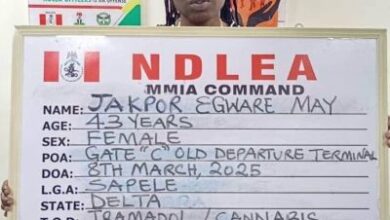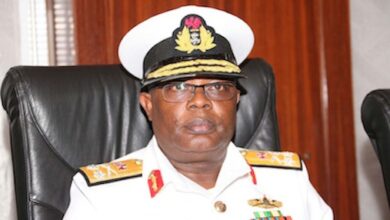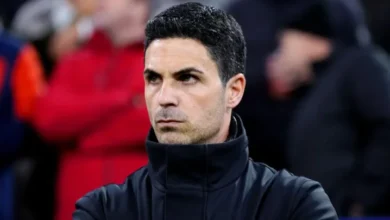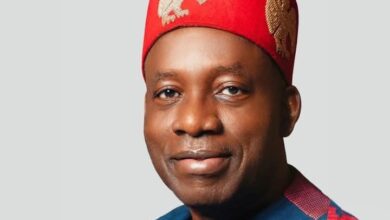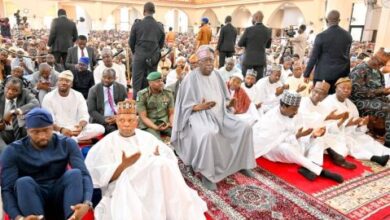Top 10 Africa’s longest-serving presidents and their enduring grip on power
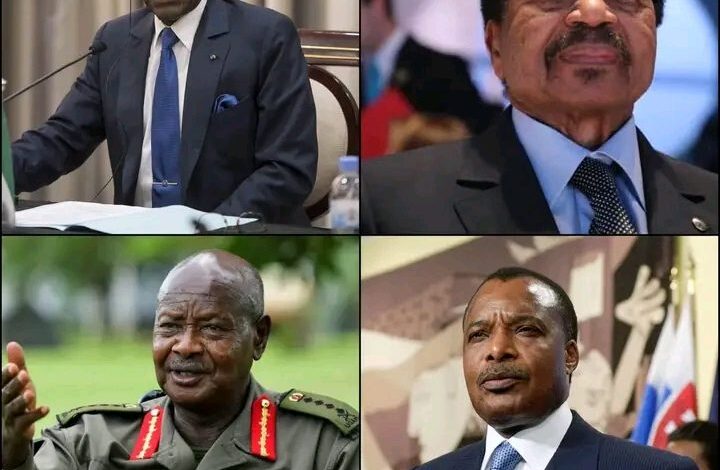
(DDM) – Africa has witnessed some of the world’s longest presidential reigns, where rulers have clung to power through military might, constitutional amendments, and political maneuvering.
Diaspora Digital Media (DDM) gathered that while a few leaders are still in power, others were toppled in revolts, assassinations, or forced resignations, yet their legacies continue to shape their nations.
Their reigns highlight Africa’s enduring struggle between entrenched authoritarianism and the demand for democratic change.
1. Teodoro Obiang Nguema Mbasogo – Equatorial Guinea (1979–present, 46 years)
Teodoro Obiang Nguema seized power in August 1979 by overthrowing his uncle, Francisco Macías Nguema, who was executed after a brutal dictatorship.
His rule has lasted 46 years, making him the longest-serving president in the world today.
Equatorial Guinea discovered vast oil reserves in the 1990s, transforming the country into one of Africa’s largest oil producers.
Despite the oil wealth, most citizens remain in poverty, while Obiang’s family has faced accusations of siphoning billions of dollars into luxury properties abroad.
Human rights organizations frequently describe his regime as repressive, with little tolerance for dissent or opposition.
His son, Teodoro Nguema Obiang Mangue, often called “Teodorín,” is seen as his successor, raising fears of a dynastic transfer of power.
2. Paul Biya – Cameroon (1982–present, 43 years)
Paul Biya became president in 1982 after the resignation of Ahmadou Ahidjo.
For 43 years, Biya has consolidated power, surviving attempted coups and repeatedly extending his mandate through contested elections.
Critics describe him as ruling from abroad, since he spends long stays in Switzerland, where he reportedly governs from luxury hotels.
His presidency has been marked by economic stagnation, allegations of corruption, and a violent separatist conflict in Cameroon’s Anglophone regions.
Despite these crises, Biya remains entrenched, benefiting from loyal military backing and weak opposition.
3. Yoweri Museveni – Uganda (1986–present, 39 years)
Yoweri Museveni took power in January 1986 after his National Resistance Army toppled Tito Okello’s regime.
Initially praised by Western governments for restoring stability and growth, Museveni was hailed as part of a “new breed” of African leaders.
Over time, he entrenched himself by abolishing term limits in 2005 and removing the presidential age cap in 2017.
His nearly 39 years in office have been marked by accusations of authoritarianism, suppression of the opposition, and militarization of politics.
Museveni often portrays himself as the only guarantor of stability in Uganda, but critics argue he has stifled democratic transition.
4. Denis Sassou Nguesso – Republic of Congo (1979–1992, 1997–present, 41 years total)
Denis Sassou Nguesso first assumed power in 1979, ruling under a Marxist-Leninist system until 1992.
He returned in 1997 after a brutal civil war, and since then he has governed for another 28 consecutive years.
Altogether, his time in power totals 41 years, making him one of Africa’s longest-ruling leaders.
He has repeatedly changed the constitution to extend his stay, most notably in 2015, when he scrapped term limits.
Despite vast oil reserves, the Republic of Congo struggles with debt, poverty, and corruption, while Sassou Nguesso maintains his grip through security forces.
5. Isaias Afwerki – Eritrea (1993–present, 32 years)
Isaias Afwerki became Eritrea’s first president in 1993 after leading the liberation struggle against Ethiopia.
He has now ruled for 32 years, establishing a highly militarized and secretive one-party state.
Eritrea has no functioning parliament, constitution, or independent judiciary, and opposition parties are banned.
Afwerki enforces indefinite military conscription, which has driven thousands of young Eritreans to flee the country each year.
Despite international criticism, he has remained in power by isolating Eritrea from global influence while projecting himself as the nation’s only protector.
6. Idriss Déby – Chad (1990–2021, 31 years)
Idriss Déby came to power in 1990 by overthrowing Hissène Habré.
He ruled for 31 years, surviving countless rebel uprisings and coup attempts.
Déby relied heavily on Chad’s military strength, turning the country into a key Western ally in the fight against jihadist groups in the Sahel.
His rule ended dramatically in April 2021, when he was killed on the battlefield while directing troops against rebels.
Power was immediately transferred to his son, Mahamat Idriss Déby, in what critics called a dynastic coup.
7. Omar al-Bashir – Sudan (1989–2019, 30 years)
Omar al-Bashir seized power in a 1989 coup, establishing an Islamist military regime.
He ruled for 30 years, overseeing Sudan through devastating conflicts, economic collapse, and international isolation.
His government became notorious for the Darfur genocide, which killed hundreds of thousands, leading to an International Criminal Court indictment.
Bashir’s rule ended in 2019, when massive street protests forced the military to remove him from office.
He remains in Sudanese custody while facing trials for corruption and war crimes.
8. Hosni Mubarak – Egypt (1981–2011, 30 years)
Hosni Mubarak took office in October 1981 after the assassination of Anwar Sadat.
He ruled Egypt for 30 years, maintaining stability but repressing opposition, while presenting himself as a key Western ally in the Middle East.
Under Mubarak, Egypt received billions in U.S. aid, but political freedoms were tightly restricted.
His regime collapsed in 2011 during the Arab Spring, when mass protests forced his resignation.
Mubarak later stood trial for corruption and the killing of protesters but was eventually acquitted of many charges.
9. Muammar Gaddafi – Libya (1969–2011, 42 years)
Muammar Gaddafi took power in a 1969 coup against King Idris and ruled Libya for 42 years.
He styled himself as a revolutionary and pan-Africanist, promoting his “Green Book” ideology and sponsoring liberation movements across Africa.
Gaddafi centralized power, dismantled traditional institutions, and used oil wealth to fund both social programs and international terrorism.
In 2011, amid the Arab Spring, NATO-backed rebels captured and killed him, plunging Libya into ongoing instability.
Gaddafi’s rule remains one of the most controversial in African history, balancing social development with authoritarianism and brutality.
10. José Eduardo dos Santos – Angola (1979–2017, 38 years)
José Eduardo dos Santos assumed power in 1979 after the death of Angola’s first president, Agostinho Neto.
He ruled for 38 years, overseeing the country’s long civil war and later an oil-driven economic boom.
Dos Santos enriched his family and inner circle, while the majority of Angolans lived in poverty.
He stepped down voluntarily in 2017, handing power to João Lourenço, who has since launched anti-corruption investigations into the dos Santos family.
Dos Santos died in 2022, but his legacy of corruption and inequality continues to define Angola’s politics.
The legacy of Africa’s long presidencies
The ten leaders collectively represent more than 350 years of rule, a staggering reflection of Africa’s struggle with democratic succession.
Many of them gained international legitimacy by presenting themselves as stabilizers, but their longevity often entrenched corruption, weakened institutions, and stifled opposition.
Analysts argue that long-serving presidents create a political culture where power is personalized, and leadership becomes synonymous with survival.
From Equatorial Guinea to Uganda, the challenge of democratic transition remains urgent, as citizens demand accountability and generational change.
The continent’s future stability depends on whether African nations can finally break the cycle of lifelong presidencies
Post Views: 36

